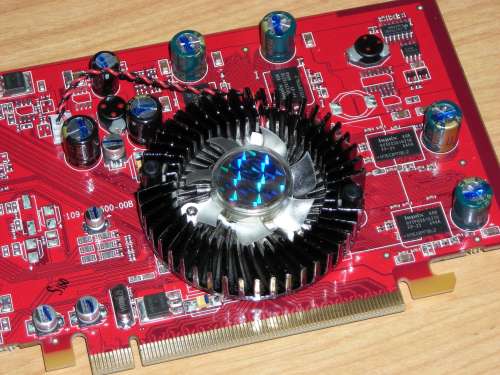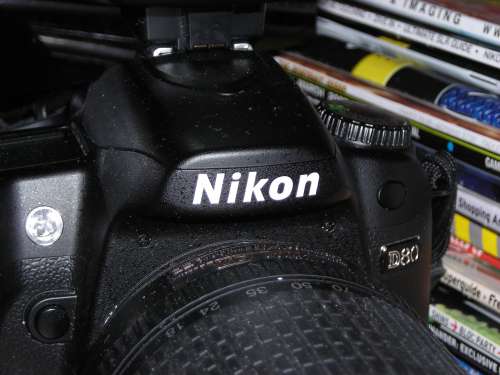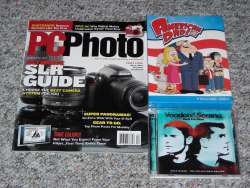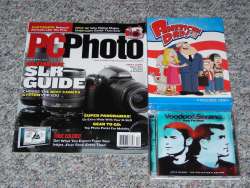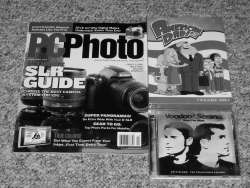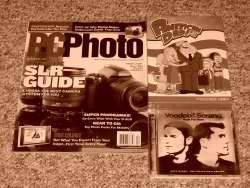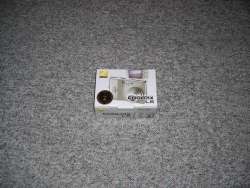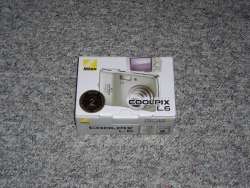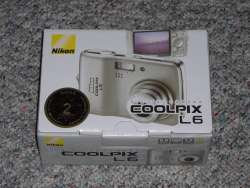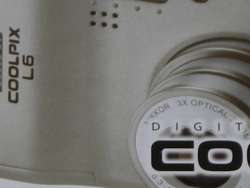- Qualcomm Launches Snapdragon 4 Gen 2 Mobile Platform
- AMD Launches Ryzen PRO 7000 Series Mobile & Desktop Platform
- Intel Launches Sleek Single-Slot Arc Pro A60 Workstation Graphics Card
- NVIDIA Announces Latest Ada Lovelace Additions: GeForce RTX 4060 Ti & RTX 4060
- Maxon Redshift With AMD Radeon GPU Rendering Support Now Available
Nikon Coolpix L6 6.0MP Digital Camera
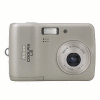
Nikon is not known as a company to slow down their release schedule, and currently they have a huge collection of point-and-shoot cameras. Today we are taking a look at a model from their lifestyle series, the six megapixel L6.
Page 2 – Image Quality, Final Thoughts
Because of the value nature of the L6, I am not going to delve too deeply into image quality, but we will touch the basics and make sure there are no evident issues. First up are two random pictures, one of a macro and the other of outdoors.
Here is a picture I took of the Sapphire X1050 card a few weeks ago. Here, I wanted to primarily see how well the red came through, as most cameras like to output a brighter tone. The L6 captured the color quite accurately, and it’s quality is better than I had thought it would be. Viewing the full version of the image, you can easily read the memory chips and other codes around the board. The full image has some grain, but the overall image quality is fair.
The second image is one I took just down the street, where construction crews have been going for what seems like forever. Here, the camera captured the skies color well and overall resulted in a sharp image. Although it’s not ideal at the full 6MP resolution, scaling down to something more manageable works well.
One thing I test for with a new camera is to see how well it handles taking a close up picture of the Nikon logo on their DSLRs. Because the white logo contrasts with the black body, it can result in purple fringing, or chromatic aberration. The L6 handled this relatively well, but the purple is evident.
Like all other Coolpix cameras, the L6 offers five color modes: Normal, Vivid, B/W, Sepia and Cyantype. You can see examples of each below. Note the noticeable chromatic aberration around the white text on the magazine. It’s more noticeable here than it was on the above photo.
Surprisingly, there is hardly any difference between Normal and Vivid, except that some of the colors have too much contrast in Vivid. The reds on the American Dad cover look more orange than anything. The other modes look nice though, especially the B/W. I am not a fan of Sepia on the Coolpix models, however. I find the effect too strong, but you may disagree.
To finish our samples off, let’s compare a few images that directly test out the optical and digital zoom capabilities. For each set below, I took a snapshot at the shortest range, 6mm. I then bumped it up to 11mm and finally 19.2mm. The final picture shows the capabilities of the digital zoom, which is equivalent to 77mm. Of course digital zoom should never be used for quality, but if may come in handy in some instances where quality doesn’t matter.
Right off the bat, I will have to admit that this camera is not a bad deal at $150. It would be hard to be bad at that price, really. I didn’t get into half the features that the camera offers, but there are many, especially in the “Scenes” department, including the Pano Assist feature I have come to enjoy. In some respects, you do get what you pay for, but the camera seems like a relative good bargain at the same time. It’s image quality is solid… better than I expected. It supports 1000 shots out of the box, which is a huge bonus and adds to the value. This might also be a drawback for some though. Since this is a less expensive model, they decided to use straight AAs, instead of including a charger. Again though, the value of the camera overrides that fact. If you want rechargeable batteries, good chargers are only $30 at most retailers.
The performance is one thing that hurts the camera though, not surprisingly. If you are shooting without the flash, you’ll be fine and it won’t matter that much. However, in a scene where flash is required, it takes almost 5 full seconds before the flash is ready to be used again. Now, the camera doesn’t allow you to take a picture while the flash is gearing up for another go, which I found quite annoying. That is not as bad as another annoyance I found, however. Whenever you want to transfer files off the camera to your PC, the lens will extend and stay open until you disconnect. This is foolish, and a good way to let dust in the air land onto the lens. I don’t recall any other Coolpix models behaving like this, but it definitely stands out to me as being ridiculous.
All of that aside, this is a solid offering for the price. It would be a great PnS for anyone who wants the utmost of simple… just a small camera to throw in a pocket with great battery life. Just bear in mind that the images are the result of a $150 camera. I didn’t touch on it, but a lot of images I took pictures of in close range have bad vignetting, so that’s another thing to think about, although it’s unavoidable usually on any camera under $300. Conclusion: Worth if it you are looking for the “cheap” way out, but you’d be better off paying extra for a more capable camera.
If you have a comment you wish to make on this review, feel free to head on into our forums! There is no need to register in order to reply to such threads.

|
|
Support our efforts! With ad revenue at an all-time low for written websites, we're relying more than ever on reader support to help us continue putting so much effort into this type of content. You can support us by becoming a Patron, or by using our Amazon shopping affiliate links listed through our articles. Thanks for your support!




